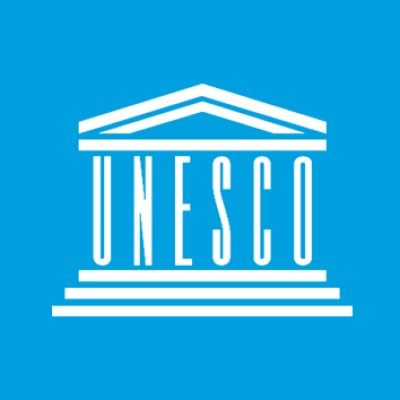Tragedy Strikes at Angkor Wat: A Lightning Bolt of Fate
May 21, 2025, 6:05 pm
Angkor Wat, a jewel of Cambodia, stands as a testament to human ingenuity. It draws millions each year, a magnet for tourists and history buffs alike. But on May 16, 2025, this sacred site became the backdrop for a tragedy. Three lives were lost to a sudden lightning strike. They sought refuge from a storm, only to be met with nature's wrath.
The victims were caught off guard. A 34-year-old man and a 52-year-old woman were among the deceased. Their families now face an unimaginable loss. The Cambodian Red Cross stepped in, delivering care packages to those affected. Yet, the silence from officials is deafening. Requests for comments went unanswered. The shadows of bureaucracy loom large.
Cambodia's government, under Prime Minister Hun Manet, is known for its tight grip on information. This is a legacy inherited from his father, Hun Sen, who ruled for nearly four decades. Critics have long accused the regime of stifling freedom of speech. The air is thick with caution. Information flows like a trickle, tightly controlled.
Angkor Wat is not just a tourist attraction; it is a symbol of national pride. The site sprawls across 155 square miles, housing the remnants of the Khmer Empire. It is a UNESCO World Heritage site, celebrated for its historical significance. Yet, the beauty of Angkor Wat is marred by the realities of modern Cambodia.
In recent years, the government has pushed for development. A new $1.1 billion airport, funded by Chinese investments, is set to open in Siem Reap. This move aims to boost tourism and economic growth. But at what cost? The relocation of 10,000 families from the Angkor Wat area has sparked outrage. Human rights groups are raising alarms. They question the nature of these relocations. Are they truly voluntary?
The government insists they are. But the skepticism remains. Amnesty International and other organizations have voiced concerns. The families, many of whom have lived in the area for generations, are being uprooted. Their homes are being replaced by infrastructure aimed at attracting more tourists. The clash between development and human rights is palpable.
UNESCO has also expressed unease. The organization, which champions cultural heritage, is watching closely. The balance between preserving history and accommodating modernity is delicate. Angkor Wat is a treasure, but it is also a living community. The people who call it home deserve a voice.
The lightning strike serves as a stark reminder of nature's unpredictability. It is a force that cannot be controlled or contained. In a world where human ambition often clashes with the elements, this tragedy underscores our vulnerability. The victims were simply in the wrong place at the wrong time. Their deaths are a wake-up call.
As the rain falls and storms brew, the allure of Angkor Wat remains. Tourists will continue to flock to its ancient stones. But the memories of that fateful day will linger. Families will mourn. The echoes of loss will resonate through the corridors of history.
Cambodia stands at a crossroads. The push for development is strong, but so is the call for human rights. The government must navigate these waters carefully. The eyes of the world are watching. The legacy of Angkor Wat is not just in its stones, but in its people.
As the sun sets over the temple, casting long shadows, one can only hope for a brighter future. A future where development does not come at the expense of human dignity. A future where the voices of the vulnerable are heard. The tragedy at Angkor Wat is a chapter in a larger story. It is a story of resilience, hope, and the quest for balance.
In the aftermath, the community must come together. Healing will take time. Support systems must be strengthened. The Red Cross and other organizations have a role to play. They must ensure that families receive the help they need. The road ahead will be challenging, but it is not insurmountable.
Angkor Wat will endure. It has weathered storms for centuries. It has stood as a witness to history. Now, it must also bear witness to change. The lessons learned from this tragedy must guide future actions. The world must remember that behind every tourist attraction, there are real lives. Lives that deserve respect and dignity.
As we reflect on this event, let us honor the memory of those lost. Let us advocate for a future where development and human rights coexist. The legacy of Angkor Wat is not just in its grandeur, but in the stories of its people. And those stories must be told.
The victims were caught off guard. A 34-year-old man and a 52-year-old woman were among the deceased. Their families now face an unimaginable loss. The Cambodian Red Cross stepped in, delivering care packages to those affected. Yet, the silence from officials is deafening. Requests for comments went unanswered. The shadows of bureaucracy loom large.
Cambodia's government, under Prime Minister Hun Manet, is known for its tight grip on information. This is a legacy inherited from his father, Hun Sen, who ruled for nearly four decades. Critics have long accused the regime of stifling freedom of speech. The air is thick with caution. Information flows like a trickle, tightly controlled.
Angkor Wat is not just a tourist attraction; it is a symbol of national pride. The site sprawls across 155 square miles, housing the remnants of the Khmer Empire. It is a UNESCO World Heritage site, celebrated for its historical significance. Yet, the beauty of Angkor Wat is marred by the realities of modern Cambodia.
In recent years, the government has pushed for development. A new $1.1 billion airport, funded by Chinese investments, is set to open in Siem Reap. This move aims to boost tourism and economic growth. But at what cost? The relocation of 10,000 families from the Angkor Wat area has sparked outrage. Human rights groups are raising alarms. They question the nature of these relocations. Are they truly voluntary?
The government insists they are. But the skepticism remains. Amnesty International and other organizations have voiced concerns. The families, many of whom have lived in the area for generations, are being uprooted. Their homes are being replaced by infrastructure aimed at attracting more tourists. The clash between development and human rights is palpable.
UNESCO has also expressed unease. The organization, which champions cultural heritage, is watching closely. The balance between preserving history and accommodating modernity is delicate. Angkor Wat is a treasure, but it is also a living community. The people who call it home deserve a voice.
The lightning strike serves as a stark reminder of nature's unpredictability. It is a force that cannot be controlled or contained. In a world where human ambition often clashes with the elements, this tragedy underscores our vulnerability. The victims were simply in the wrong place at the wrong time. Their deaths are a wake-up call.
As the rain falls and storms brew, the allure of Angkor Wat remains. Tourists will continue to flock to its ancient stones. But the memories of that fateful day will linger. Families will mourn. The echoes of loss will resonate through the corridors of history.
Cambodia stands at a crossroads. The push for development is strong, but so is the call for human rights. The government must navigate these waters carefully. The eyes of the world are watching. The legacy of Angkor Wat is not just in its stones, but in its people.
As the sun sets over the temple, casting long shadows, one can only hope for a brighter future. A future where development does not come at the expense of human dignity. A future where the voices of the vulnerable are heard. The tragedy at Angkor Wat is a chapter in a larger story. It is a story of resilience, hope, and the quest for balance.
In the aftermath, the community must come together. Healing will take time. Support systems must be strengthened. The Red Cross and other organizations have a role to play. They must ensure that families receive the help they need. The road ahead will be challenging, but it is not insurmountable.
Angkor Wat will endure. It has weathered storms for centuries. It has stood as a witness to history. Now, it must also bear witness to change. The lessons learned from this tragedy must guide future actions. The world must remember that behind every tourist attraction, there are real lives. Lives that deserve respect and dignity.
As we reflect on this event, let us honor the memory of those lost. Let us advocate for a future where development and human rights coexist. The legacy of Angkor Wat is not just in its grandeur, but in the stories of its people. And those stories must be told.


